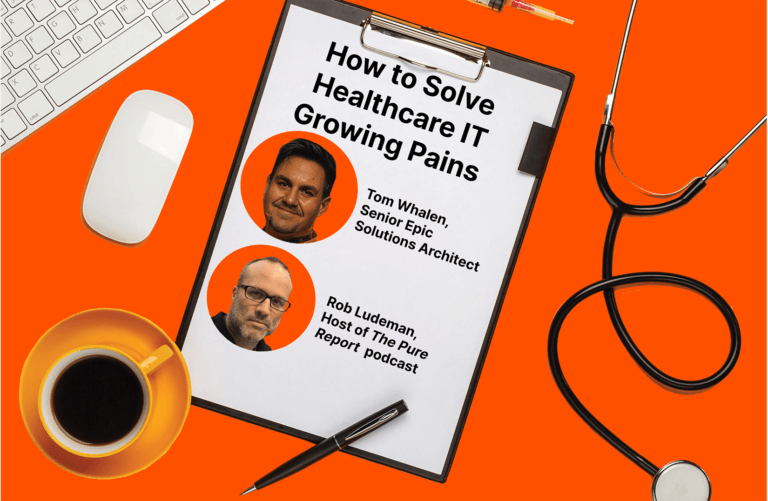Waste and overspend are two of the biggest challenges with the cloud. A study found that 23% of IT decision makers believe optimizing cloud environments and economics will be their biggest effort to advancing transformation in 2023.¹
It’s led to a new discipline in IT: “FinOps,” or cloud financial management. Here, I’ll explain what FinOps is, why it’s so important, and the infrastructure change that can help you control cloud waste and spend for good.
What Makes Controlling Cloud Spend So Challenging?
The velocity and scale of cloud adoption can too easily lead to chaos, cost, and complexity. Money spent on unused or idle resources can be staggering. And the more workloads companies move, the more challenging it gets. CPU and RAM spikes, which are common events when applications are competing for resources, are likely to be charged by the minute, or even by the second. Imagine these spikes happening several times a day, every day, for an entire cloud billing period. What does that invoice look like?
A few other issues may be to blame for cloud cost overruns:
- Absence of an established cloud operating model. Understanding how you want your business to operate in the cloud is critical for laying out the architecture to support its daily operations. Along with cloud experience and operations, cloud economics is a key area this framework can help address.
- Finance lacks familiarity with the cloud. When the finance team lacks visibility into cloud environments, things get complicated. The same five-year forecasts and budgets used for other cost centers won’t work here. The cloud requires different budgeting, and in some cases, restructured finances.
- Cloud costs are not always fixed or predictable. Unlike a traditional data center, the cloud is variable, dynamic, and fluid—especially as workloads become more mobile, moving to and from the cloud. It’s a new way of operating, which means costs can be difficult to forecast and predict. Certain variable charging models can dilate this; however, subscription models can help to cap spend.
- It’s easier (and faster) to procure cloud resources. Compared with months of hardware procurement and CAPEX expenditures that have well-established approval processes, cloud spend can spiral from zero to hundreds of thousands of dollars in a few days. (A symptom of Shadow IT.)
- Compliance and regulations frequently change. Compliance can change on a quarterly basis, making five-year budgets, plans, and investments challenging for agility.
The result: Billions of dollars that will be spent in the cloud will be wasted—often the result of purchasing for max capacity, not actual usage. Where waste isn’t occurring, overspend often does. That adds up, especially if costs are hitting close to a thousand dollars a day.
A report from the FinOps Foundation found that the more a company tends to spend in the cloud, the more it needs help managing that spend.² It’s why a majority of organizations have begun to establish cloud finance roles in their organizations.
How Can FinOps Help?
Many CFOs are having an epiphany: They can’t continue doing the same thing every year and expecting better results. Think of FinOps as a critical process in the cloud operating model, like bookkeeping for a small business or QA testing in a DevOps workflow. The work isn’t a one-time project—it’s ongoing and crucial.
Cloud FinOps can remove the gray areas of cloud spend, give companies better visibility into cloud resource utilization, track spend against utilization, and help all parties optimize how the cloud is leveraged.
It’s a process, but it’s also a mindset.
Instead of each team calculating its own cloud usage, a central FinOps function can measure cloud consumption. This doesn’t mean that individual teams are off the hook: They should be accountable for their cloud spend, and for optimizing consumption, thereby bringing down the cloud invoices.
FinOps can provide a broader view of cloud spend across the entire organization. With a central FinOps function, development teams and finance teams are best able to:
- Provide visibility into spend, with dashboards or utilization metrics reports.
- Find opportunities to optimize resources.
- Identify opportunities to eliminate or reduce spend—often using savings instruments or monitoring tools.
- Negotiate better rates or discounts.
Tips for Success with FinOps
Like a broader cloud operating model, successful FinOps should be both operational and cultural. The FinOps Foundation report suggests “to not only start the practice up, but to encourage and incentivize cloud users (like devs and engineers) to participate in cloud cost management.”
Other tips to consider:
- Create KPIs to track against—total spend, cost savings goals, and utilization.
- Lean on automation, especially with right-sizing, estimation, scaling, and scheduling. Forecasting can be improved with artificial intelligence for IT operations (AIOps), which is built into Pure1®. Pure1 smart capacity planning makes it easier to forecast data storage requirements in the cloud.
- Adopt as-a-service models where you need more transparency into pricing, billing, and usage rates. Improved cloud economics is just one benefit of subscription or utility models.
- Ensure data and workloads are mobile and accessible. Data gravity is real and a huge contributor to high costs. In some cases, moving a workload back on-prem is the best option, but you’ll need modern data storage that allows you to do this seamlessly.
- Schedule weekly review meetings. Include cross-functional team members and sync up to stay on track.
Simplify FinOps and Advance Transformation with Pure Storage
Getting FinOps right isn’t just about creating a tiger team and hoping for the best. It requires a cloud operating model—one that addresses cloud economics—and a strong foundation of data management capabilities.
“You shouldn’t pay for anything you’re not using. You shouldn’t have to make any bets. You should have a set of services that you can predict the cost of, and you should be in control of the dials.” –Abraham Barnes, Director, Subscription Sales, Pure Storage
Abraham Barnes, Director, Subscription Sales, notes, “The solution is obvious: You shouldn’t pay for anything you’re not using. You shouldn’t have to guess, or make five- and three-year bets. You should have the confidence that you’ve got a set of services that you can predict the cost of, and that you’re in control of the dials. Your feet are on the accelerator and the brake.”
For it to really be the cloud you imagine, you have to operate and budget like the cloud. That includes data storage that’s consumed in a cloud-like way—one that provides flexibility, agility, and visibility. It’s what Pure does in practice that our competitors cannot:
- Optimized cost with flexible payment models. We offer a catalog of services and service levels for the capabilities you need.
- The ability to respond to changing market conditions, keep up with growth, and innovate with limitless access to capabilities, wherever and whenever you need them.
- The advantage of offloading commercial and operational risk to your storage provider.
- No longer having to secure each year to fund refreshes. All services are continuous and upgrades are non-disruptive.
Evergreen//One™ can help to transform operating models and costs. When you can align your storage costs with your cloud costs, along with AIOps from Pure1 to help you scope, price, quote, negotiate, order, and install, you’ll only use the data services you need.
Staying on top of cloud spend can be a full-time job—and it often is. Data management with Pure Storage can be effortless enough to simplify, not complicate, the way you manage your cloud spend.
![]() ¹ Bredin IT research study, 2022.
¹ Bredin IT research study, 2022.
² https://data.finops.org/






